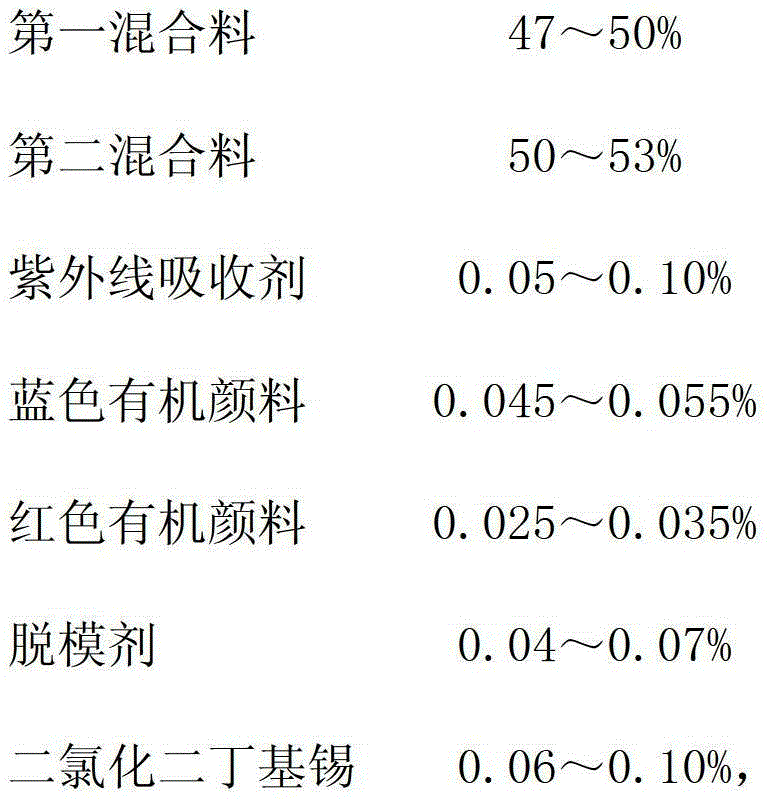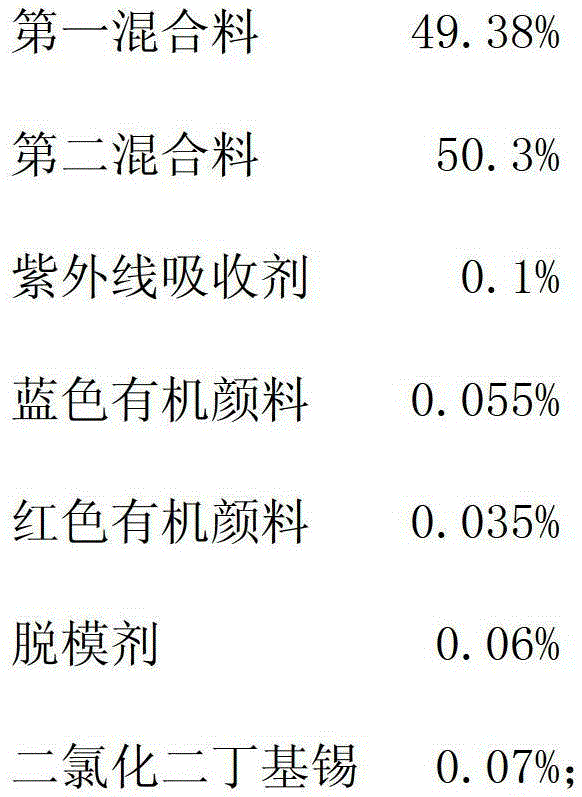PMC (Polymer-matrix composite) radiation-proof resin lens and manufacturing process thereof
A resin lens and anti-radiation technology, which is applied in glasses/goggles, optics, instruments, etc., can solve the problems of high price, quality and performance that cannot satisfy consumers, etc., so as to prevent yellow edges, protect eyes, and reduce visual distortion Effect
- Summary
- Abstract
- Description
- Claims
- Application Information
AI Technical Summary
Problems solved by technology
Method used
Image
Examples
Embodiment 1
[0055] formula:
[0056]
[0057] Among them, the first mixture is composed of 323g of dicyclohexylmethane-4,4'-diisocyanate and 174g of hexamethylene-1,6-diisocyanate; the second mixture is composed of 1,2-di[ (2-Mercaptoethyl)thio]-3-mercaptopropane 316.89g, pentaerythritol tetra-3-mercaptopropionate 115.69g, 1,4-dithiane-2-methanthiol 45.27g, 1,4-di Thiane-2-methylthioethanethiol 25.15g composition.
[0058] Preparation method: After cleaning the mold, assemble the mold under the condition of 0.6MPa air pressure; filter the above raw materials with a capsule filter, vacuumize and stir for 45 minutes at a temperature of 13-17°C, mix well, and then add 503g of KT60WB , vacuum and stir for 50 minutes, and mix well; after the mixed raw materials are filtered, under the pressure condition of ≤0.15MPa, use nitrogen to pressurize the raw materials into the assembled mold and seal it; Cure for 1 to 6 hours at a temperature of ℃, and pry open the cured mold to separate the mold a...
Embodiment 2
[0061] formula:
[0062]
[0063] Wherein the first mixture consists of 294g of dicyclohexylmethane-4,4'-diisocyanate and 196g of hexamethylene-1,6-diisocyanate; the second mixture consists of 1,2-bis[( 2-Mercaptoethyl)thio]-3-Mercaptopropane 295.8g, Pentaerythritol Tetra-3-Mercaptopropionate 102g, 1,4-Dithiane-2-Methanethiol 61.2g, 1,4-Dithiane - Composition of 2-methylthioethanethiol 51g.
[0064] The lens is manufactured according to the method of Example 1, and its performance is tested, the results are shown in the following table:
[0065]
[0066]
Embodiment 3
[0068] formula:
[0069]
[0070] The first mixture consists of 318.5g of dicyclohexylmethane-4,4'-diisocyanate, hexamethylene-1,6-diisocyanate: 171.5g; the second mixture consists of 1,2- Bis[(2-mercaptoethyl)sulfur]-3-mercaptopropane 364.8g, pentaerythritol tetra-3-mercaptopropionate 91.8g, 1,4-dithiane-2-methanthiol 40.8g, 1,4 - Composition of 30.6 g of dithiane-2-methylthioethanethiol.
[0071] The lens is manufactured according to the method of Example 1, and its performance is tested, the results are shown in the following table:
[0072]
PUM
 Login to View More
Login to View More Abstract
Description
Claims
Application Information
 Login to View More
Login to View More - R&D
- Intellectual Property
- Life Sciences
- Materials
- Tech Scout
- Unparalleled Data Quality
- Higher Quality Content
- 60% Fewer Hallucinations
Browse by: Latest US Patents, China's latest patents, Technical Efficacy Thesaurus, Application Domain, Technology Topic, Popular Technical Reports.
© 2025 PatSnap. All rights reserved.Legal|Privacy policy|Modern Slavery Act Transparency Statement|Sitemap|About US| Contact US: help@patsnap.com



